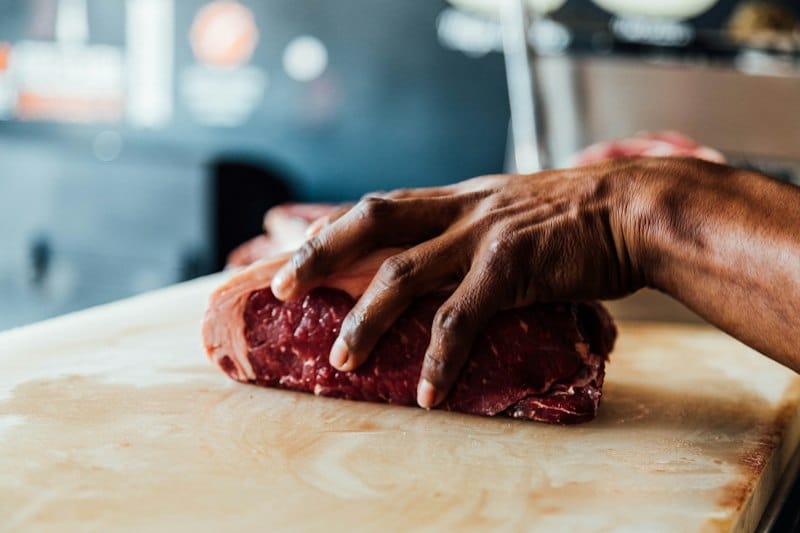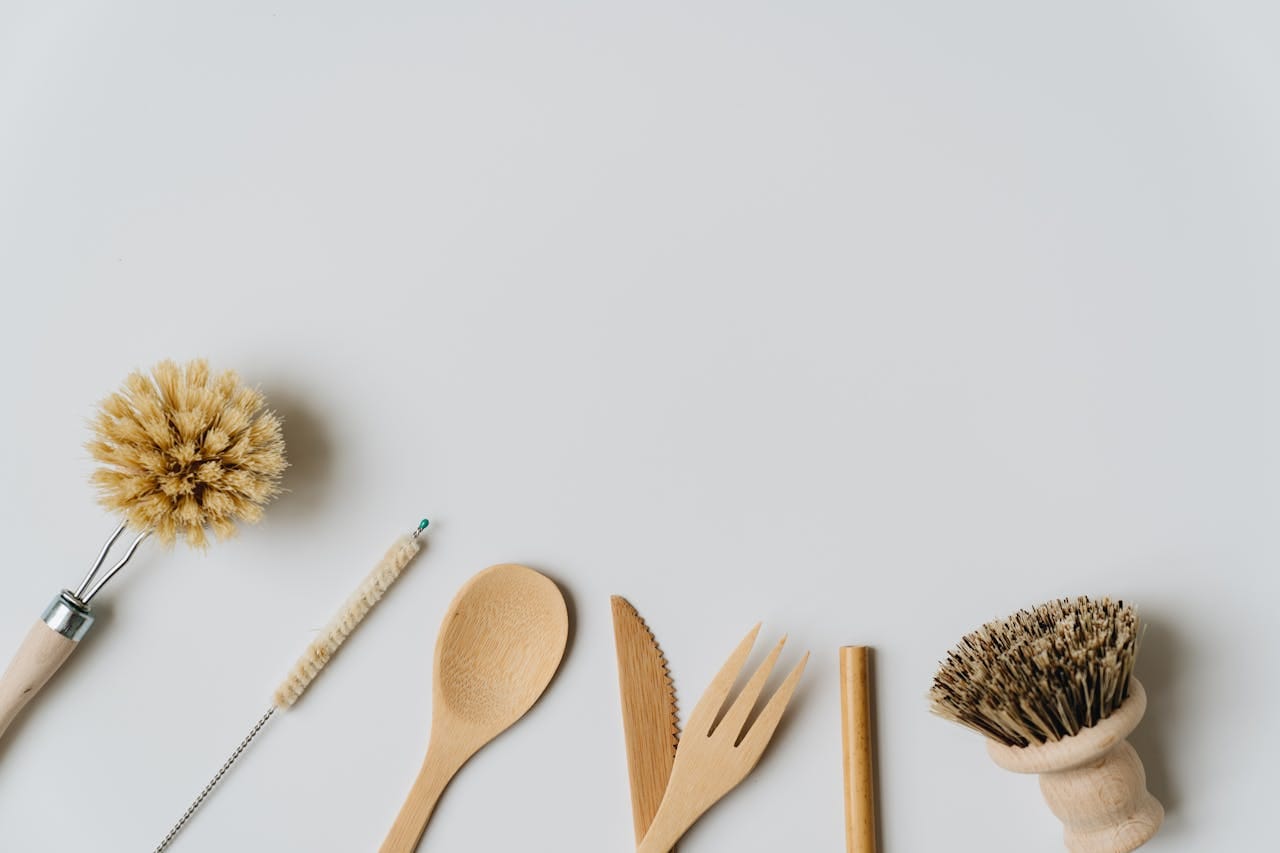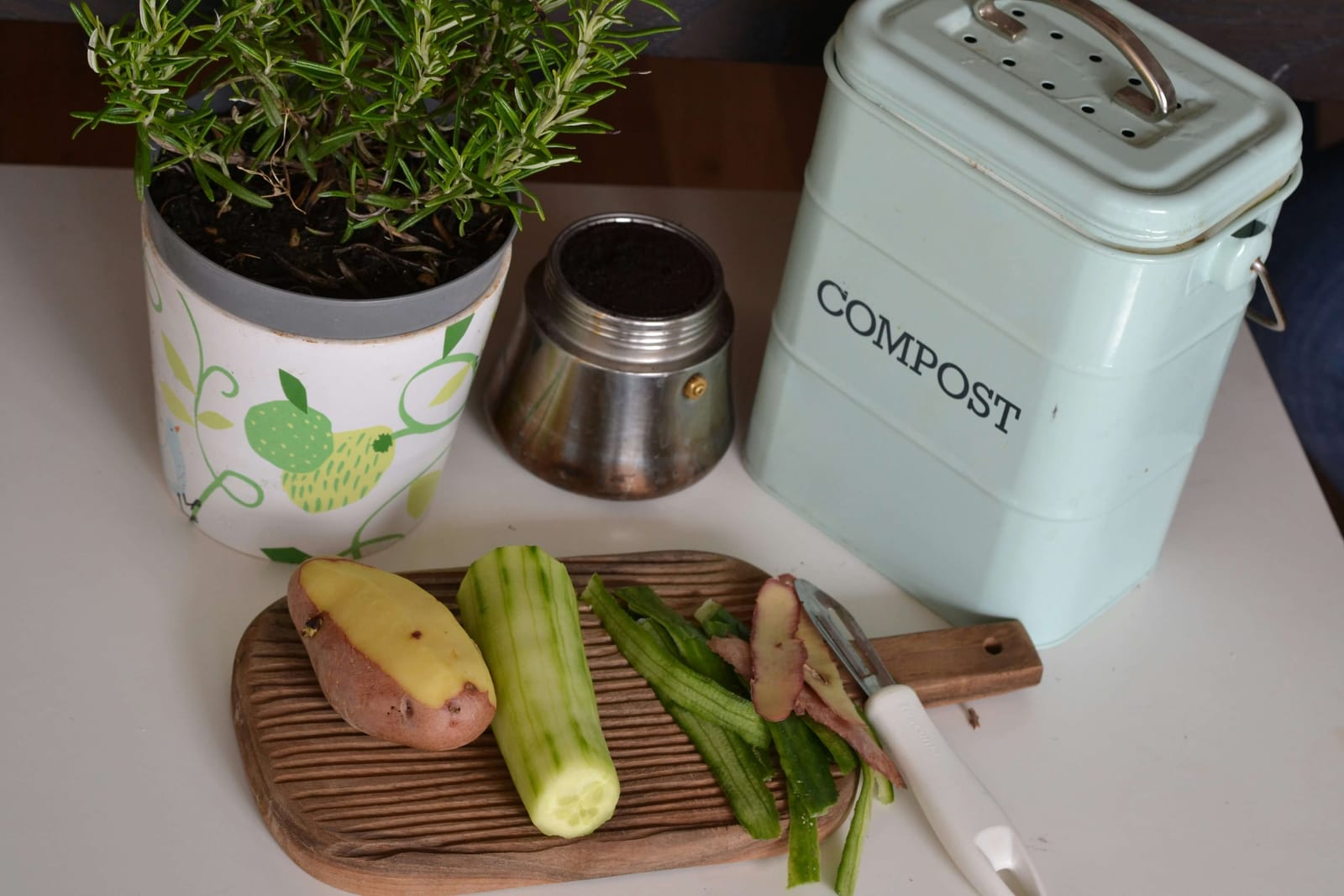Picture this: You're in the kitchen, about to tackle a juicy roast or a plump chicken. But wait, what's the secret weapon that turns a good cook into a kitchen superhero? It's the mighty boning knife! This isn't just any knife; it's like the ninja of the kitchen, slicing through meat with superhero precision. Ready to learn how to pick the best boning knife and use it like a pro? Buckle up, because we're about to embark on an adventure into the world of boning knives that'll change your kitchen game forever!
🤝As an Amazon Associate, we earn from qualifying purchases made through our links, at ZERO additional cost to you.
5 Best Boning Knives
- Best Overall: Victorinox Swiss Army Fibrox Boning Knife
- Editor's Choice: Zwilling J.A. Henckels Professional "S" Boning Knife
- Best on a Budget: Mercer Culinary Curved Boning Knife
- Best Splurge: Shun Premier Gokujo Fillet Boning Knife
- Most Versatile: Zelite Infinity 6-inch Boning Knife
1. Best Overall
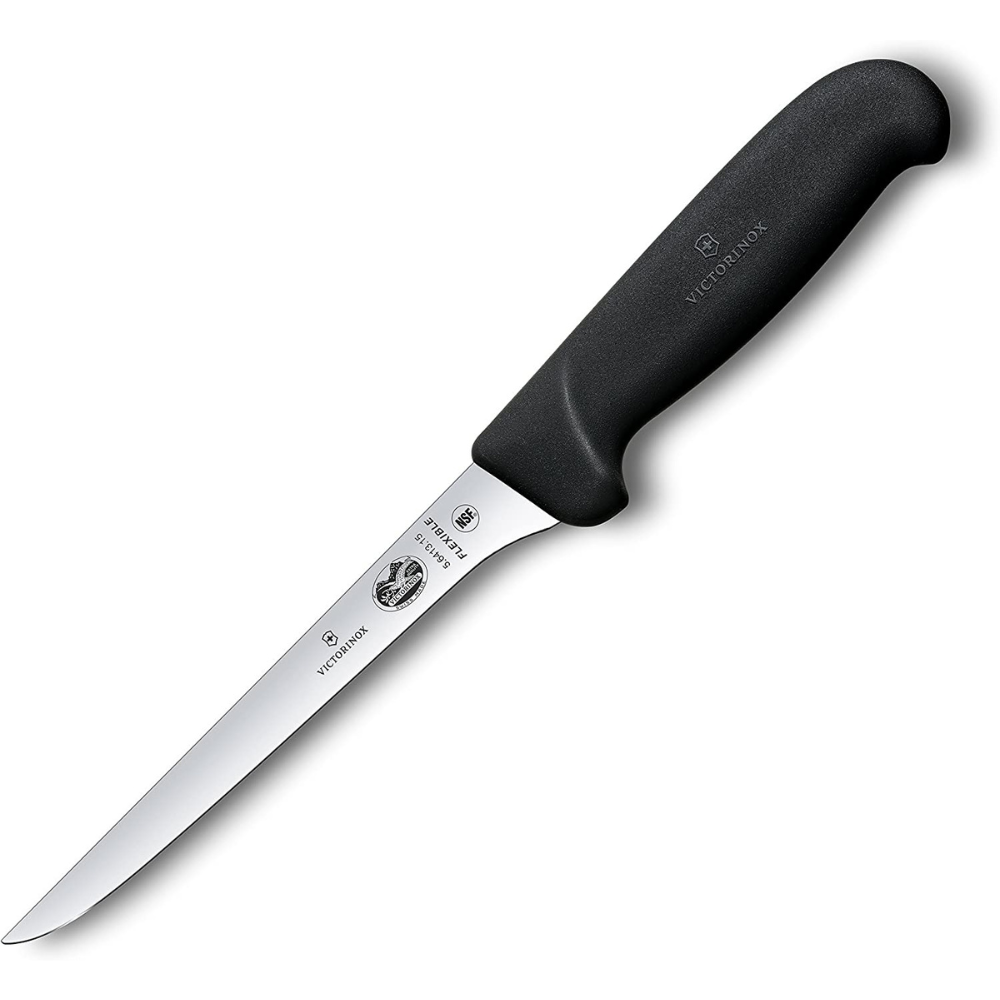
Victorinox Swiss Army Fibrox Boning Knife
Known for its brand reliability and functional design, this knife provides exceptional value for money. Its NSF approval and keen edge make it a standout choice for general use.
What We Love
- Renowned Brand: Over a century of knife-making expertise.
- Functional Handle: Fibrox handle for professional use.
- Sharp and Flexible: Pointed tip and keen edge for precision.
- NSF Approved: Meets high sanitary standards.
What to Keep in Mind
- Aesthetic Appeal: Handle design is more functional than stylish.
Why It Might Be Right for You
You're a stickler for value, always seeking the best bang for your buck. As you hold the Victorinox knife, you feel the weight of Swiss craftsmanship in your hand. Each slice you make is a testament to the knife's precision and flexibility. It's not just a kitchen tool; it's a culinary asset that elevates your cooking game without emptying your wallet.
Customer Review (source: Amazon)
I can't say enough about this knife's performance and value. Originally bought for trimming briskets, it's now my go-to for everything in the kitchen, from veggies to steaks. Just a heads-up—once you let someone else use it, you might not get it back! My wife loves it for all sorts of tasks, even opening boxes.
2. Editor's Choice
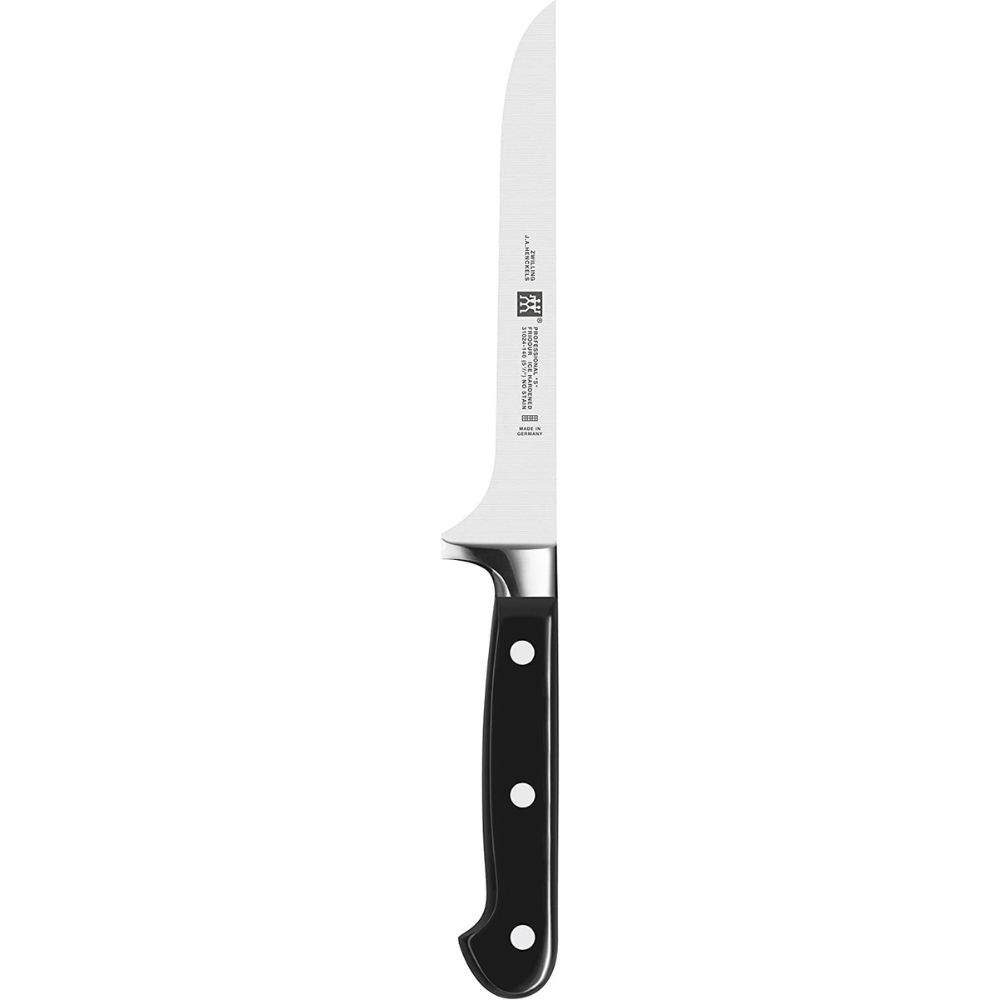
Zwilling J.A. Henckels Professional "S" Boning Knife
This knife offers a perfect blend of versatility, edge retention, and quality build. It's a well-rounded option that excels in multiple areas, making it our top pick.
What We Love
- Versatile Use: Debone chicken, fish, and more.
- Edge Retention: Stays sharp for a long time.
- Quality Build: Made in Germany with high carbon steel.
- Lightweight: Weighs just 4.8 oz for effortless use.
What to Keep in Mind
- Grip Comfort: Some find the handle could be more ergonomic.
Why It Might Be Right for You
Picture yourself in the kitchen, prepping for a family dinner. You reach for your Zwilling J.A. Henckels knife, and effortlessly, the blade glides through the meat. No more wrestling with bones or worrying about dull blades. This knife is your reliable partner, making your culinary journey smoother than ever. And when you're done, a simple wipe is all it takes to keep it pristine.
Customer Review (source: Amazon)
I spent a bit more than planned on this knife, but it's worth every penny. Don't listen to folks who say you need a super stiff blade. Trust me, you want some flexibility, especially for tricky cuts like pork butt. This knife is versatile and durable—just what you need for those dark and dangerous culinary adventures.
3. Best on a Budget
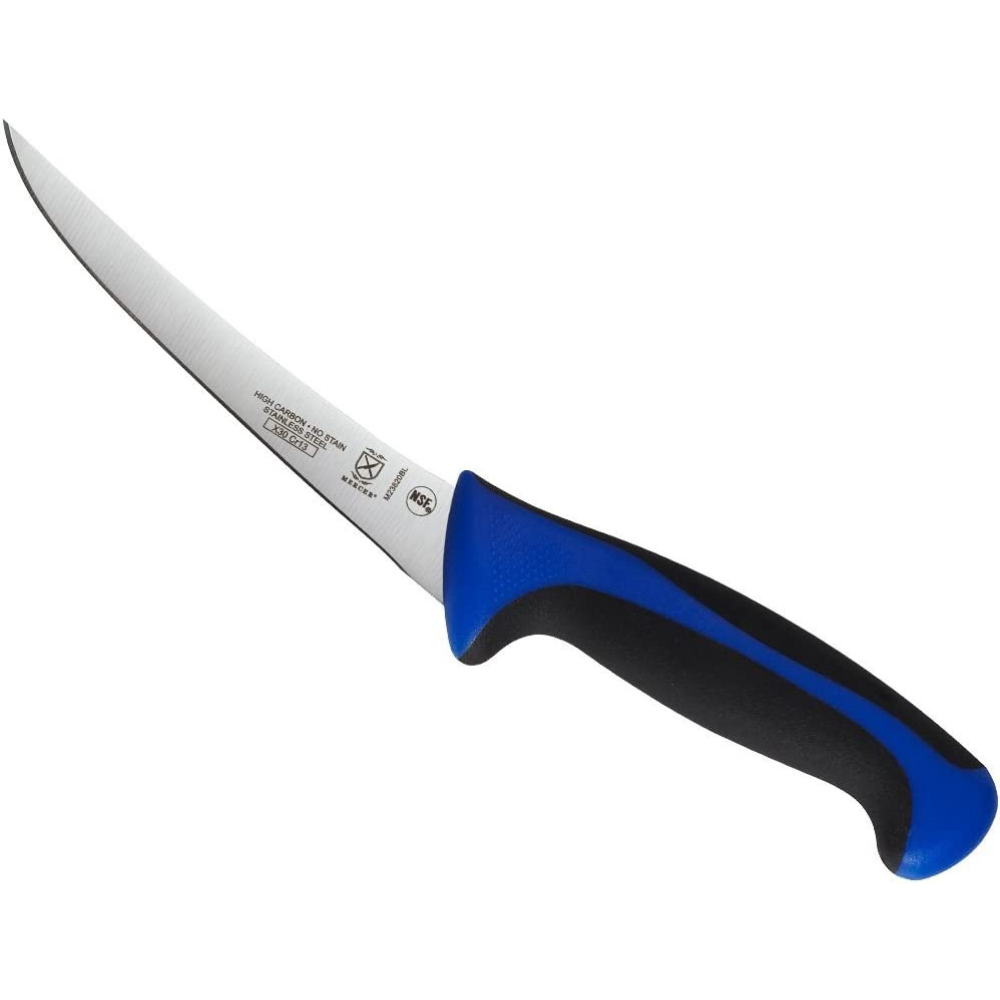
Mercer Culinary Curved Boning Knife
This knife offers excellent functionality at an affordable price. Its high-carbon Japanese steel and safety features make it a great pick for budget-conscious consumers.
What We Love
- Affordable: Excellent value for the price.
- Non-Slip Handle: Santoprene handle for a secure grip.
- Rust-Resistant: High carbon steel fights corrosion.
- Safety Features: Full bolster and finger guard included.
What to Keep in Mind
- Hand Wash Only: Not dishwasher safe.
Why It Might Be Right for You
Envision yourself on a tight budget but unwilling to compromise on quality. You unwrap your Mercer Culinary knife and feel the comfortable grip. As you slice through a chicken breast, the blade does its job flawlessly. You realize that you didn't have to break the bank to own a piece of culinary excellence. This knife proves that quality and affordability can coexist, making your home-cooked meals a cut above the rest.
Customer Review (source: Amazon)
This Mercer Culinary knife is a steal. It arrived sharp and feels sturdy with a comfy handle. While it's not flexible enough for fish, it's perfect for pork shoulders and briskets. No storage sheath, but the original packaging works fine. Used it on a pork butt and it was a breeze. Highly recommend!
4. Best Splurge

Shun Premier Gokujo Fillet Boning Knife
For those willing to invest in top-tier craftsmanship and elegant design, this knife is the ultimate luxury choice. Its Japanese steel and double-bevel blade make it worth the splurge.
What We Love
- Japanese Craftsmanship: Made with high-quality Japanese steel.
- Double-Bevel Blade: Extends knife life and aids in meat deflection.
- Elegant Design: Walnut Pakkawood handle and VG Max Cutting Core.
- Multi-Functional: Ideal for slicing meat and peeling fish.
What to Keep in Mind
- Brittle Blade: Some find it less suitable for tougher meats.
Why It Might Be Right for You
You're someone who appreciates the finer things in life, and your kitchen is no exception. As you pick up your Shun Premier knife, you feel the balance and elegance that only Japanese craftsmanship can offer. Each cut you make is like a brushstroke on a canvas, turning your culinary endeavors into art. This knife isn't just a splurge; it's an investment in your gastronomic passion.
Customer Review (source: Amazon)
This knife is a game-changer for cutting raw meat—it's like a hot knife through butter. It's super sharp, well-balanced, and the design is stunning. I've even tested it on fruits and veggies, and it excels there too. Seriously, if you're on the fence, just treat yourself and buy it. You won't regret it.
5. Most Versatile
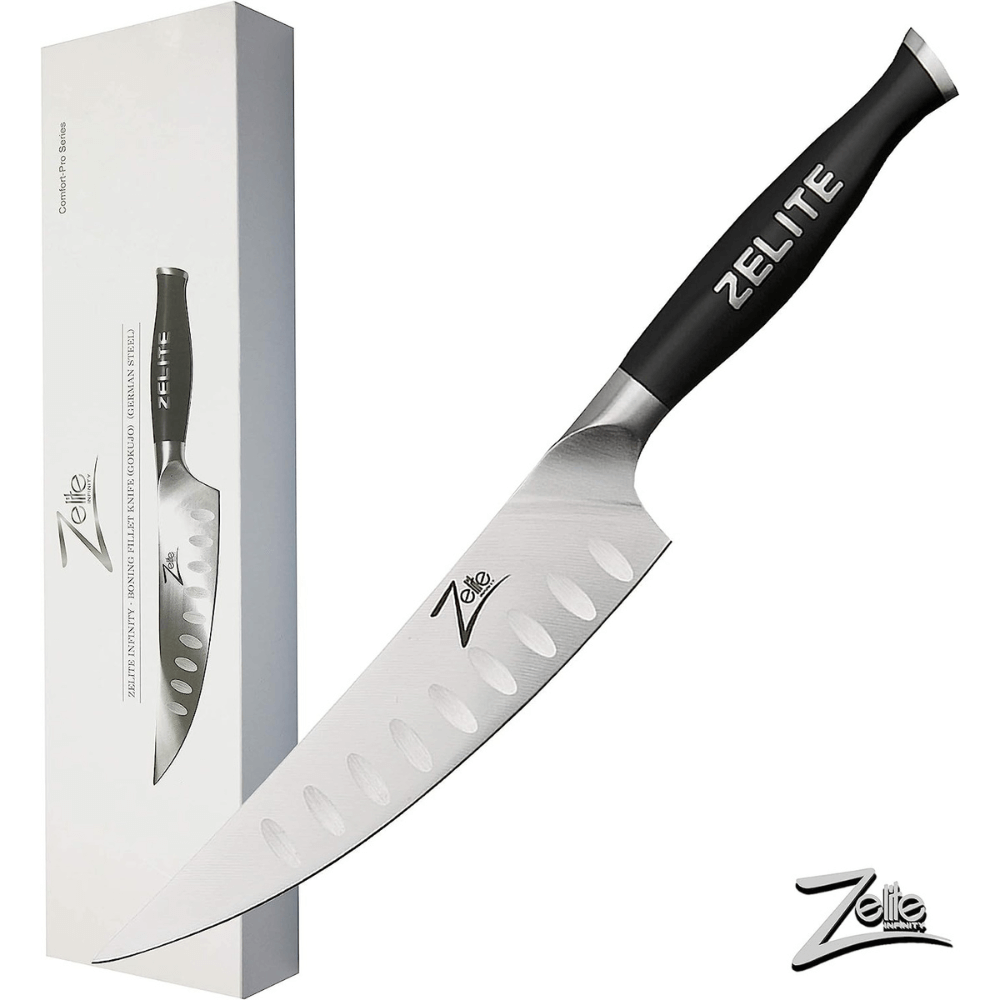
Zelite Infinity 6-inch Boning Knife
The knife's ultra-sharp blade, honed using the traditional Honbazuke method, and its comfortable grip make it not only ideal for boning fish but also versatile enough for other intricate slicing and dicing tasks.
What We Love
- Value for Money: High functionality at a reasonable price.
- Quality Material: German stainless steel for durability and ease of cleaning.
- Ultra-Sharp Blade: Honed using the traditional Honbazuke method.
- Comfortable Grip: Ergonomic, full tang handle for control and comfort.
What to Keep in Mind
- Specific Use: Primarily designed for boning fish.
Why It Might Be Right for You
You're an avid seafood lover, always looking for the freshest catch to grace your dinner table. The moment you hold the Zelite Infinity knife, you know you've found your perfect match. Its blade cuts through fish like butter, making the tedious task of boning almost enjoyable. This knife doesn't just make your cooking easier; it elevates your entire seafood experience to a whole new level.
Customer Review (source: Amazon)
I'm a review junkie and a foodie, and let me tell you, these Zelite knives are a dream come true. They're incredibly sharp and make kitchen time so much more enjoyable. I even bought a pair for making homemade cat food, and they cut through meat and bones like it's nothing. If you're hesitating, don't—these knives are worth every penny and will last forever.
How We Chose the Best Boning Knives
Choosing the perfect boning knife for your culinary needs can be a daunting task. The market is flooded with various brands, models, and types, each claiming to be the best. This can make the selection process overwhelming and confusing.
Our Expertise
Our goal is to provide you with expert insights into these knives, even if we don't have personal experiences with each product. We've conducted extensive research and considered user feedback to evaluate their performance, durability, and ease of use. Our team has scoured customer reviews from trusted sources like Amazon and consulted with culinary professionals to bring you a well-rounded view of each knife's capabilities. Additionally, we've compared these knives against their competitors to help you find the perfect match for your specific needs.
Our Selection Process
Our team has invested considerable time and effort into researching each product on this list. We've scrutinized various aspects such as blade material, handle comfort, edge retention, and user reviews to ensure that we only recommend the best of the best. This way, you can be confident that the quality of each boning knife we've selected is up to par, and you can make an informed decision.
By following our guide, you're not just buying a tool; you're investing in a reliable kitchen partner that will make your cooking experience more enjoyable and efficient.
What To Consider Before Buying The Best Boning knife?
Before you choose the best boning knife for your purposes, you must consider several essential elements to guarantee you make the proper choice.
Here are the most frequent and essential characteristics when selecting a durable knife for boning meats and poultry.
Blade Materials
You want a blade that can endure the hard usage of removing flesh from bones. High carbon stainless steel and stainless steel are the most often used materials for the best boning knives. These metals are not simply tough and durable but also highly resistant to stains and corrosion.
Tempered steel is more durable and valuable than high-carbon steel. However, most forged steel blades are prohibitively expensive.
Blade Types
The blades of boning knives are either curved or straight. A curved blade incorporates an upwardly frontal tip point, making bone removal considerably simpler.
On the other hand, the straight blade has a longer, narrower blade with a distinct tip point, making it ideal for softer chicken and fish bones.
Size
The best boning knives vary from 5 to 9 inches, and the knife lengths make little difference. However, diversity enables you to choose a knife that fits well in your hands.
Smaller knives, on the other hand, are simpler to wield and are ideal for novices. A smaller-sized knife may not be suitable for deboning bigger portions of meat.
Handle Materials
In general, the material of the ergonomic handle is determined by your choices. Wood, polypropylene, and rubber are some of the handle materials available. A wooden handle is excellent for more style and a firm grip.
However, hardwood handles are not waterproof and are prone to cracking or breaking during use. Polypropylene and rubber handles, on the other hand, provide excellent water resistance, grip, and comfort. They do not, however, give the perfect looks.
Flexible blade vs. Stiff blade
The efficiency with you debone or fillet your meat is directly proportional to the blade's flexibility. Typically, the blade is both flexible and rigid. A flexible blade bends readily and makes diverse cuts simpler to manage. As a result, you may even use it to fillet fish.
Semi-stiff knives, on the other hand, are more powerful. As a result, it may be used for various deboning applications.
These include deboning meats, separating bone joints, and chopping large birds and turkeys. Because of its stiffness, it can endure the challenges of dealing with thicker meats.
Weight and Balance
A lightweight knife is considerably simpler to wield and manipulate while dealing with various types of meat. A carbon steel knife is heavier than a stainless steel knife.
However, they all provide outstanding performance, so choosing any choice should not be a problem. However, you don't want to choose a knife that is too light since it may shatter if used on heavier meats.
Safety Feature
A high-quality bets boning knife must have the necessary safety measures to avoid injury. A finger guard/bolster or finger notch are two popular safety measures. This blade design keeps your finger safe from cuts.
Easy to Clean
Knives, both those that need hand washing and those that can be cleaned in the dishwasher, are available. Even though your knife is dishwasher safe, it is safer and encouraged to hand wash it. Putting your knife in the dishwasher eventually degrades the blade's quality.
Warranty
It's usually a good idea to buy a product that comes with a guarantee so that your investment is risk-free. After all, the warranty contributes to the product's overall quality.
When purchasing a boning knife, look for one with at least a one- to two-year guarantee. Some knives even have a lifetime guarantee to cover material or manufacturing issues.
Price Range
The best thing about boning knives is that they are reasonably priced. That being the case, you'll never be at a loss for a suitable replacement blade for your knife. The best Boning knives are typically priced between $30 to $200 on the market.
Frequently Asked Questions
Why do we need a boning knife?
A flexible boning knife is a well-known culinary piece of equipment. Its primary function, as the name implies, is to remove bone from different types of meat.
On the other hand, some individuals utilize it as a standard all-purpose knife. As a consequence, the design of the boning knife has evolved through time to reflect this.
Do I need a sheath or other cover for my boning knife?
Boning knives, even though often constructed of a stainless steel blade, may rust if exposed to air. A boning knife sheath or cover will keep it clean and prevent it from rust and corrosion. As a bonus, it will be less bulky to carry about.
What is the difference between a semi-stiff and a semi-flex boning knife?
The intended application determines the distinction between semi-stiff and semi-flex knife blades. The knife with a flexible blade is prone to breaking when used on hard foods such as beef, mutton, or pig.
Furthermore, harder blades may damage delicate foods such as fish and poultry. As a result, you must have the proper blade flexibility for your meats.
As a general rule, flexible boning knives are preferable for delicate meats. In contrast, semi-stiff blades are better for red meats.
How can you tell whether it's a boning knife?
Boning knives are easily identified. They typically have a 5-7 inch blade length, a thin blade, and a pointed or curved tip. In most cases, the blade can be bent in half or is at least somewhat flexible.
The finger guard is also there to safeguard your hand from coming into contact with the blade. For all practical reasons, it is, therefore, a filet knife.
What is the difference between a fillet and a boning knife?
Fillet and boning knives have one function: they remove bones from meat. However, if you carefully study the blades, you will see that a fillet knife is best used for fish, while a boning knife is best used for pigs, cattle, chicken, and so on.
Boning knives are the thinnest of all kitchen knives, yet they are not as slim as fillet knives. The majority of boning blades are straight, although other boning knives are bendable. Fillet knives are thinner than boning knives and hence more flexible. It is designed to create delicate cuts of meat more accurately and conveniently.
If you're unsure about whether a boning knife or fillet knife suits your needs, our article "Boning Knife vs. Fillet Knife: Understanding the Differences" offers valuable insights to help you make an informed choice.
How should a boning knife be sharpened?
Boning knives must stay sharp, so you don't have to work too hard to use them. The best boning knife performs all of the work for you, and all you have to do is control it. In this case, a whetstone or honing rod may be used to sharpen a boning knife.
To begin, lubricate the whetstone or honing rod with mineral oil to make dragging the knife on the surface easier. Angle the blade on the surface before dragging it lower. You must gently lift the handle for the tip so the end may contact the sharpening tool. Repeat until the knife is completely sharpened.
What are the advantages of a curved blade in a boning knife?
A curved blade allows for greater precision and control when you're deboning meat. The curvature makes it easier to navigate around bones and joints, providing a cleaner cut. It's especially useful for meats with complex bone structures.
How does a curved boning knife differ from a straight one?
A curved boning knife is designed to give you better angling capabilities, making it easier to cut around bones and remove skin. A straight boning knife, on the other hand, is more suited for slicing through meat in a single, straight cut.
Why is a razor-sharp edge important in a boning knife?
A razor-sharp edge is crucial for clean, precise cuts. It minimizes the tearing of the meat, ensuring that the texture and quality are preserved. A dull knife can make the deboning process more difficult and can compromise the quality of the meat.
Items reviewed:
- Best Overall: Victorinox Swiss Army Fibrox Boning Knife
- Editor's Choice: Zwilling J.A. Henckels Professional "S" Boning Knife
- Best on a Budget: Mercer Culinary Curved Boning Knife
- Best Splurge: Shun Premier Gokujo Fillet Boning Knife
- Most Versatile: Zelite Infinity 6-inch Boning Knife

Best Overall: Victorinox Swiss Army Fibrox Boning Knife
Known for its brand reliability and functional design, this knife provides exceptional value for money. Its NSF approval and keen edge make it a standout choice for general use.
Please note that the reviews on this page have been edited for readability and clarity while maintaining the essence of the original content.
Further Reading
- Once you have acquired a new boning knife, you may wonder how to properly care for it to ensure its longevity. In our micro-post about caring for your boning knife, we will provide you with valuable tips covering essential maintenance and sharpening techniques.
- For expert tips on keeping your boning knife razor-sharp, be sure to check out our article, How To Sharpen A Boning Knife by Kitchen Seer.
